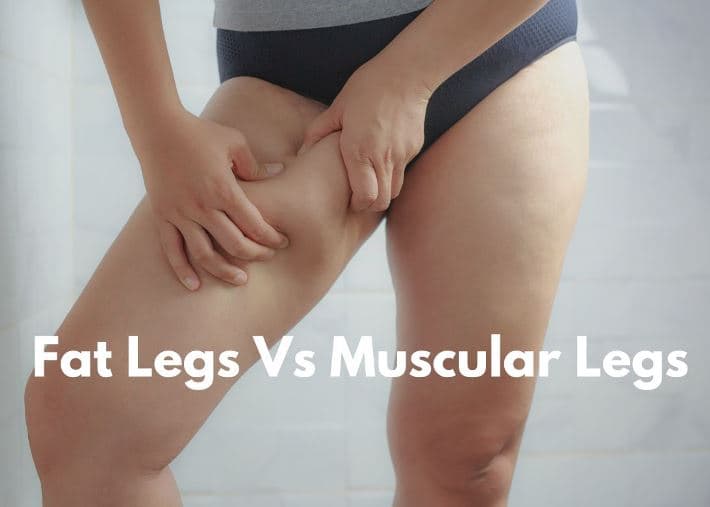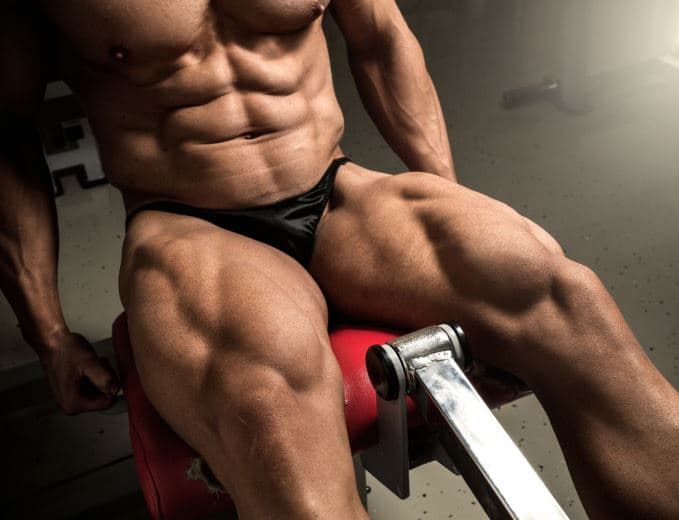Fat Legs Vs Muscular Legs: Pros and Cons
When it comes to legs, there are two types that people commonly talk about: fat legs and muscular legs. While some people prefer one over the other, each type has its own advantages and disadvantages. In this article, we will explore the differences between fat legs and muscular legs, as well as the pros and cons of each.
Table of Contents
Fat Legs vs Muscular Legs: Pros and Cons
Here we will explore the pros and cons of having fat legs versus muscular legs. Each option has its own benefits and drawbacks, and it ultimately comes down to personal preference and individual goals. Read on to discover the advantages and disadvantages of each.
Fat Legs
Fat legs are typically associated with a lack of exercise and an unhealthy lifestyle. However, some people naturally have thicker legs due to their genetics, and that’s perfectly normal.
Pros of Fat Legs
- Cushioning: Fat acts as a natural cushion for your legs, which can be helpful if you do a lot of running or jumping. It can also help prevent injuries and reduce the impact on your joints.
- Warmth: Fat is an insulator, which means it can help keep your legs warm in colder temperatures.
- No pressure to build muscle: If you have fat legs, you may feel less pressure to build muscle and can focus on other aspects of fitness instead.
Cons of Fat Legs
- Health risks: Having excess fat on your legs can increase your risk of health problems such as diabetes, heart disease, and stroke.
- Appearance: Many people find fat legs unattractive and may feel self-conscious about wearing shorts or skirts.
- Difficulty with certain exercises: Fat can make certain exercises, such as running and jumping, more challenging.
Muscular Legs
Muscular legs are typically the result of regular strength training and exercise, such as weightlifting, squats, lunges, and other leg-focused exercises.
Pros of Muscular Legs
Building muscle in your legs can have a variety of benefits, such as increasing overall strength and power, improving athletic performance, and reducing the risk of injury.
One major benefit of having muscular legs is the increased strength and power that comes with it. Muscles allow you to generate more force and power, which can be helpful for activities such as running, jumping, and lifting heavy objects. Additionally, having strong legs can make everyday tasks such as climbing stairs or carrying groceries easier and less tiring.
Another advantage of having muscular legs is the potential to improve athletic performance. Strong legs are essential for many sports, such as soccer, basketball, and track and field. They can help you run faster, jump higher, and move more explosively, giving you an edge over your competition.
Cons of Muscular Legs
However, there are also some potential downsides to having muscular legs. One is the aesthetic appearance, as some people may prefer a leaner or less bulky look.
Additionally, building muscle can be a challenging and time-consuming process that requires consistent effort and training. It may also require consuming more calories to support muscle growth, which can be difficult for those looking to lose weight or maintain a certain body composition.
Which One is Right for You: Fat Legs or Muscular Legs
Ultimately, the decision of whether to aim for fat legs or muscular legs depends on your individual goals and body type. Here are some things to consider:
- If you’re looking for cushioning and warmth, fat legs may be a good option for you.
- If you’re interested in strength and athleticism, muscular legs may be more suitable.
- If you’re concerned about health risks associated with excess fat, building muscle may be a good way to reduce those risks.
- If you’re happy with the way your legs look and feel, there’s no need to change them.
How to Determine if You Have Fat Legs or Muscular Legs
It can be difficult to tell if your legs are carrying excess fat or if they are simply muscular. Here are some tips for determining which category your legs fall into:
Look at your overall body fat percentage:
If you have a higher overall body fat percentage, it’s likely that your legs are carrying excess fat as well. On the other hand, if you have a lower body fat percentage, your leg size may be due to muscle mass rather than fat.
Check your waist-to-hip ratio:
A higher waist-to-hip ratio can be a sign of excess fat on the legs as well as the midsection. A lower ratio may indicate that your leg size is due to muscle mass rather than fat.
Consider your activity level:
If you engage in regular exercise that focuses on building leg muscles, such as weight lifting or running, it’s likely that your leg size is due to muscle mass rather than fat.
However, if you lead a sedentary lifestyle and do not engage in regular exercise, your leg size may be due to excess fat.
Look for signs of muscle definition:
Muscular legs will typically have visible muscle definition, such as the separation between the quadriceps and hamstrings. If your legs are carrying excess fat, there may be less visible muscle definition.
Consult with a medical professional:
If you are still unsure whether your leg size is due to fat or muscle, it’s a good idea to consult with a medical professional. They can help you determine your body composition and make recommendations for how to achieve your desired leg size and shape.
By considering these factors, you can determine whether your leg size is due to excess fat or muscle mass, and make decisions about how to achieve your desired leg shape and overall health.
FAQs
Can you turn fat legs into muscular legs?
Yes, through a combination of strength training and a healthy diet.
Can you have both fat and muscular legs at the same time?
Yes, it is possible to have a combination of both fat and muscle in the legs.
Are muscular legs stronger than fat legs?
In general, yes, because muscle is stronger than fat.
Can you lose fat in your legs without losing muscle?
Yes, it’s possible to lose fat from your legs without building muscle. However, keep in mind that losing fat in a specific area is not always possible. When you lose weight, you lose it from all over your body, not just one specific area. This is known as spot reduction, and it’s a myth. The best way to reduce fat in your legs is to focus on overall weight loss through a combination of a healthy diet and regular exercise.
Can genetics play a role in the shape of your legs?
Yes, genetics can contribute to the shape and size of your legs, but lifestyle factors such as diet and exercise can also play a role.
Conclusion
The decision of whether to aim for fat legs or muscular legs is a personal one. There’s no right or wrong answer, as it largely depends on your individual goals and body type. If you’re looking to reduce your health risks, building muscle may be a good way to do so. If you’re more interested in cushioning and warmth, fat legs may be a better option. Whatever you choose, make sure to focus on a healthy diet and regular exercise to maintain overall health and well-being.


